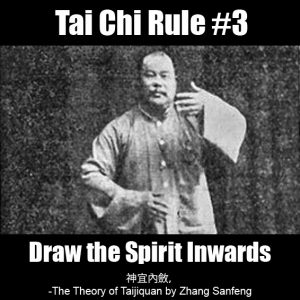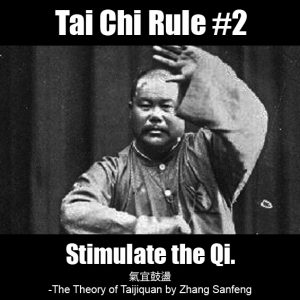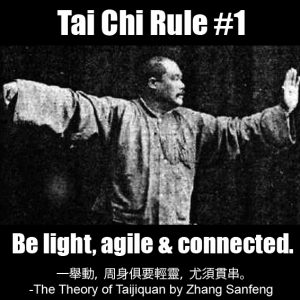The Shén (spirit) should be drawn inwards.
神宜內斂,

What is Shén?
Shén translates as spirit and opinions vary on how this concept is applied in Tai Chi.
Like Qi, Shén is a sensation that can be felt and manipulated. However, Qi is something beginners can feel and use.
Shén is more advanced and takes longer to understand in a tangible way.
Fortunately, a beginner can still put rule #3 into practice by understanding some basic theory.
How does Shen work?
Shén is influenced by our yì (意) and our xīn (心). Yì is our intention or thought and xīn is our emotion.
If you are stressed or agitated your shen will be disturbed. If your mind is constantly responding to your senses, jumping around to analyze what you are seeing, hearing, smelling, etc. then your shen will follow.
How to concentrate the Shen Internally
Be calm & relaxed so that your emotions don’t disrupt the shén.
Bring your attention and focus inwards to gather the spirit.
Here is a simple breathing exercise that can help you relax and calm your mind.
1. Breath in, relax and feel the body fill and expand.
2. Breath out and relax. Let any tension or stress leave with the breath.
3. Breath in, tense and feel the body fill and expand.
4. Breath out and relax letting go of tension and stress.
5. Repeat
You can use any warm up exercise that calms you and brings your focus inside the body.
Experiment and use whatever methods work best for you.

